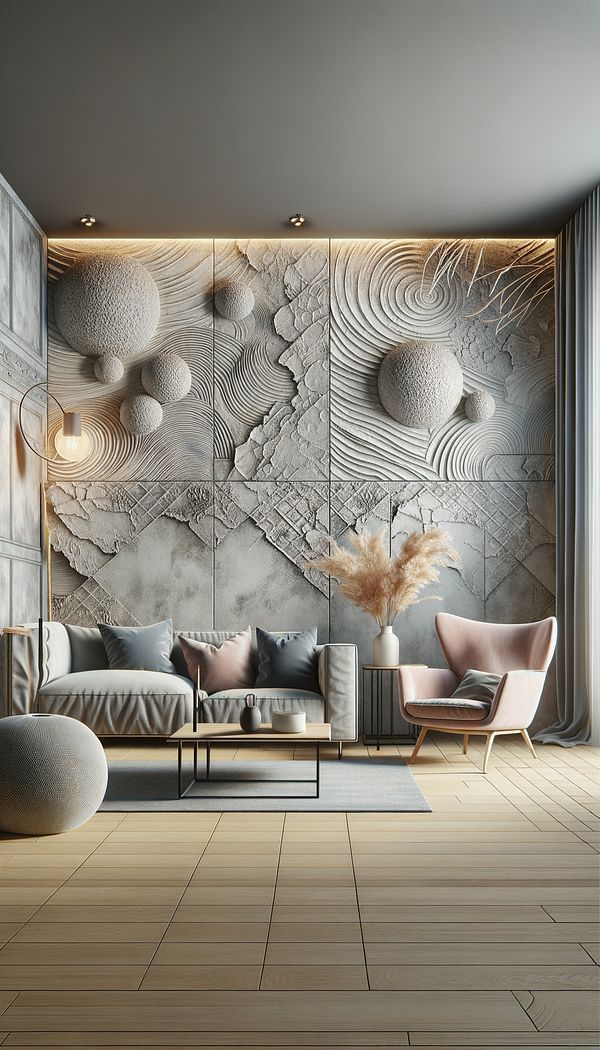What is Bagging?
Bagging is a decorative wall finish obtained by applying a thin cement-based layer to walls and then manipulating it with a sponge or cloth.
Description
Bagging is a technique utilized in interior design to add texture and depth to walls by applying a thin, cement-based mixture. Once the mixture is applied to the wall, it is then manipulated using a sponge, cloth, or other tools to create a textured, often mottled appearance. This method offers an alternative to more traditional wall treatments such as painting or wallpapering, providing a tactile and visually intriguing finish that can complement various design styles.
The consistency of the mixture and the tools used for bagging can dramatically affect the outcome, allowing for a range of textures from subtle to dramatic. Professionals often experiment with different application techniques to achieve the desired effect. Furthermore, adding pigments to the mixture before application can introduce color directly into the bagging process, negating the need for painting afterwards.
Not only does bagging add aesthetic appeal, but it can also help to disguise imperfections in the wall's surface, making it a practical choice for older homes or buildings. This technique, while more commonly seen in certain styles such as rustic or Mediterranean designs, can be adapted to suit a wide array of interior environments.
Usage
In a Mediterranean-style home, the walls might be bagged to add an earthy, textured look that complements terracotta tiles and heavy wooden furniture. Alternatively, in a modern minimalist space, a more subtle bagging technique with a monochrome palette could create interest without overwhelming the simplicity of the design.
FAQs
-
Can bagging be applied over existing painted walls?
Yes, bagging can be applied over existing painted walls, but surface preparation is crucial. The walls must be thoroughly cleaned and sanded for the mixture to adhere properly.
-
How long does the bagging finish last?
With proper application and maintenance, a bagging finish can last many years. Its durability is comparable to traditional plaster or paint finishes.
-
Can bagging be done as a DIY project?
While it's possible to attempt bagging as a DIY project, achieving a consistent and desired effect can be challenging without experience. It's often recommended to seek professional help for optimal results.
Practical Application
When considering bagging for your space, start by deciding on the level of texture and color you want. Preparing a small sample area can be a great way to test the mixture's consistency and the effect of different tools. Remember, the outcome can vary significantly based on the technique, so experimentation and practice are key. Consider consulting with or hiring a professional for large scale or complex projects to ensure the finish meets your expectations.
-
EscutcheonAn escutcheon is a decorative or protective plate around a keyhole, door handle, light switch, or faucet.
-
Tertiary ColorA color created by mixing one primary color with one secondary color.
-
FriezeFrieze refers to a wide, decorative band, typically found near the ceiling on walls, or on the exterior of buildings.
-
BatikBatik is a technique of wax-resist dyeing applied to whole cloth.
-
TextureTexture refers to the tactile surface quality of materials or objects within an interior space.
